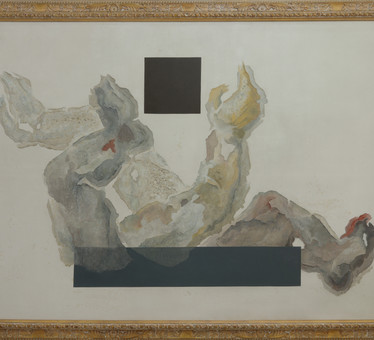Samson Flexor

Soroca, Moldavia, 1907 —
São Paulo, Brazil, 1971
In Samson Flexor’s work there is a particular dialectic, a movement of dissolution of the figure so that its final return takes place in the ambiguous, serene and uncomfortable revelation, of the link between existence and demise.
A Russian immigrant who formed in Paris in the 1920s, the universe initially discovered in Flexor is that of the types and landscapes of the light city, registered under the domain of impressionist technique, as testified by Conciérge (1940) and Montparnasse (1934). It is from the experience of World War II, when even the earth becomes fierce, that the painter concludes that “wars force man to rediscover the universe.” This discovery Flexor will make towards abstraction. First, subjecting the figure to the smooth geometry inheriting Orphism, as in Menino Estudando Matemática (1945), which integrates geometric shapes with the play of colors and light that crosses the pictorial space.
Flexor’s rediscovery of the universe continues in Brazil, where he settled in 1948 and participated, in 1949, in the exhibition of Figurativism to Abstractionism, at MASP. It was during this period that the painter’s works completely disentangled themselves from the figures in the play of bright colors and musical forms present in Abstração Tropical (1948) and Abstração Baroque nº 2 (1948). With its development, Flexor’s abstract works start to instill a persistent sense of movement combined with musicality, achieved through the combination of planes and lines and the alternation of the color tone, as in Vaivém Diagonal (1954) and Arlequinade (1957) .
At the end of the 50s, after the end of the Atelier Abstração, founded by the painter in 1951, the precise forms give way to stains, signs of gestures permeated by an original and cosmic expressiveness, as noted in Élan Blue No. 7 (1958 ). And the stains are also the ones that are beginning to be reborn in the painter’s work, in the Bípedes series, exhibited at the São Paulo Biennial of 1957.
These creatures, between the mineral and the animal, trapped in the interregnum of birth and fading, are watery accumulations, hollow and open bodies, sometimes in diaphanous colors that seem to dissolve in the white background. The universe is again discovered in figures such as O parto (1969) and Biped on a White Background (1970), reborn from fundamental abstraction, not as an act of returning to the worldly record, but as a generative gesture of an unapprehensible being, captured in the fusion tragedy of life to death, which is expressed only in the purity of creation.
VRP